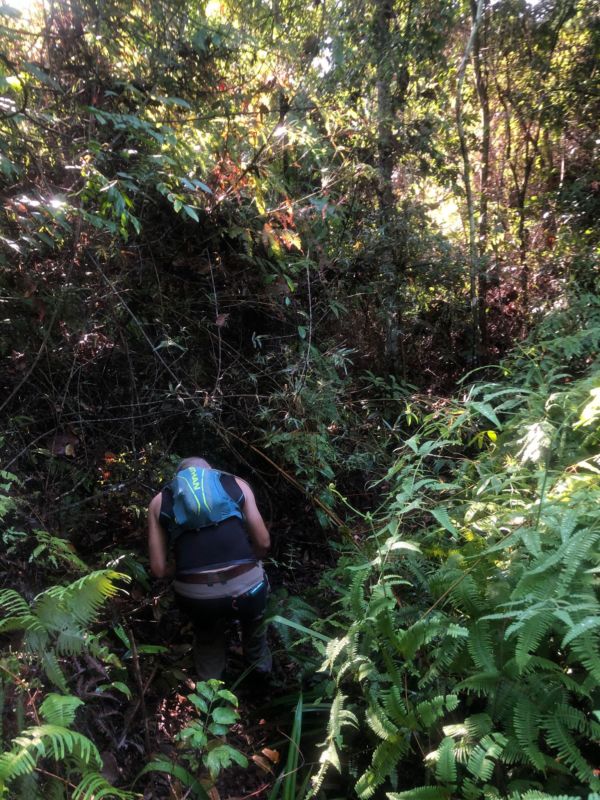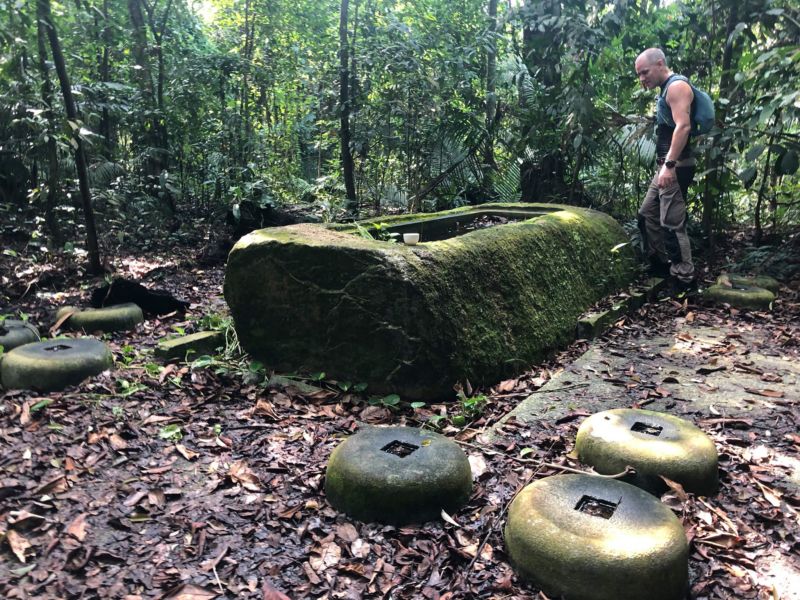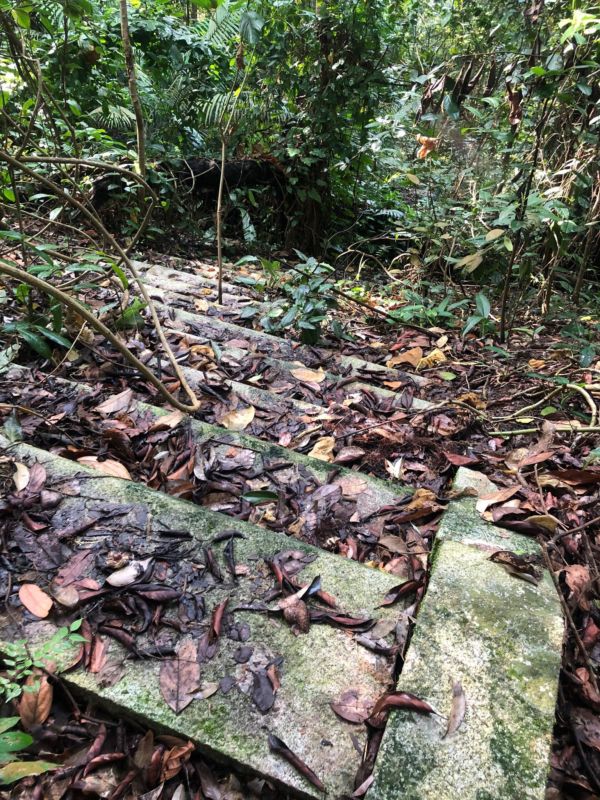The following is excerpted with permission from a longer blog post by Edward J. Taylor which details the arduous access to the shrine ruins of Shonan Jinja and can be read here. (Wikipedia states that “the historical site remains highly inaccessible to the public, being located on a steep hillside and being quite far from the nearest jungle trail.”
************

It was the Tiger of Malaya, Lieutenant-General Tomoyuki Yamashita, who first conceived of Shonan Jinja, to be built in order to commemorate the Japanese soldiers who died in Malaya during the remarkable 70 day dash to take Singapore, hyperbolically called the “Gibraltar of the East” by the British defenders. The design of the shrine was based on Tokyo’s Yasukuni Shrine, but expectations were even greater, as in time it would be second only to Tokyo’s Meiji Jingu, the centerpiece for a new city that would arise over the subsequent 30 or 50 years.
Nearly ten thousand British and Australian POWs from the nearby internment camps of Changi, Sime Road and Adam Park were forced into labor, clearing a large portion of heavy jungle to build not only the shrine complex, but also a lengthy bridge akin to that found at Ise, and a flight of 94-step granite steps that led upward toward the gods. There was also apparently a Christian Cross adjacent to the shrine, erected for the souls of the Allies killed in the fall of Singapore. History differs on whether the impetus for its construction came from a Japanese Colonel, or from the POWs themselves who balked at the building of the Japanese shrine unless they were allowed to construct their own memorial as well. In any event, Shonan Jinja had a grand opening nine months later, on 15 February 1943, a year after the fall of Singapore.

The water basin was the only intact part of the shrine. A trio of stone “doughnuts” were at each corner, indicating that a small structure had been built to provide shade for those who purified themselves before the climb to the honden further up the adjacent stone stairs. These we found covered in vines and debris, though the surrounding network of roots had yet to displace the massive set of stone work that supported this upper level. We moved along the jungle here, but found no trace of the network of buildings that had stood here. Remarkable, since they had once covered an area of 1.9 square kilometers.
There is some debate about who destroyed the shrine upon the Japanese surrender, either the British in a frenzy of revenge for the brutalities out at the POW camps, or the Japanese themselves as a means of preventing the allies from doing just that sort of desecration. What is certain was that the locals would have made off with the scattered materials as they attempted to rebuild their kampong communities after the war. Much later, even after those same kampongs were replaced by modern Singapore’s trademark HBD flats, the ruins of Shonan Jinja were declared a historic site by the National Heritage Board, though nothing has been done with them in the eighteen years since.
Today, all that was left was the tangle of trees, a far cry from the typical cypress and camphor that tower over shrines on the Japanese mainland. We made our way past the chōzubachi again to descend the steps down to the water. A long sandō causeway had once led to the low wooden bridge. We followed a concrete drainage awhile, but never did find any remnants of the old sandō (which later Googling revealed to have been to our left). We bashed through jungle to get to the edge of the reservoir, looking for the remnants of the old bridge, namely the support posts that poked their heads above water in the photographs I’d seen online. The posts proved elusive, as the most recent photos were a decade old, and it was high tide anyway.

*****************
On youtube there is a 1943 NHK programme featuring the shrine (2 mins from 1:23 to 3:30). For the Wikipedia page on Shonan Jinja please click here. (NB Wikipedia uses an alternative spelling, Syonan Jinja.)

Leave a Reply